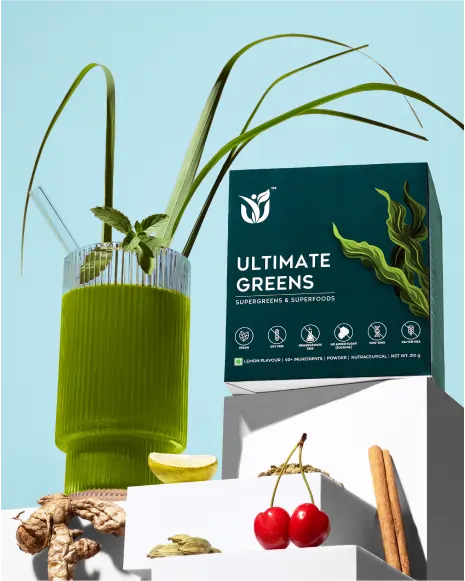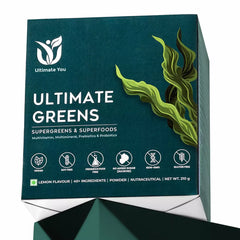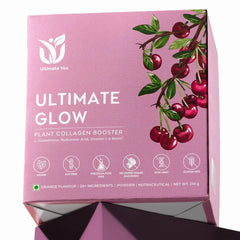L-Citrulline is a naturally occurring amino acid that plays a crucial role in nitric oxide production, blood flow regulation, and muscle recovery. Unlike essential amino acids, L-citrulline is synthesized by the body but can also be obtained through dietary sources. Consuming foods rich in L-citrulline can support cardiovascular health, enhance exercise performance, and promote overall well-being. If you're looking to increase your L-citrulline intake naturally, here are the best food sources to consider.
10 Best Food Sources of L-Citrulline
1. Watermelon
Watermelon is the most well-known and richest natural source of L-citrulline. This juicy fruit contains high amounts of the amino acid, particularly in its rind and flesh.
Studies suggest that consuming watermelon juice can significantly increase L-citrulline levels in the body, aiding in improved blood circulation and muscle endurance. It also provides hydration, essential vitamins, and antioxidants that further support overall health.
2. Cantaloupe
A close relative of watermelon, cantaloupe is another excellent source of L-citrulline. It contains moderate amounts of the amino acid while also being rich in vitamin C, potassium, and beta-carotene. Eating fresh cantaloupe can contribute to improved nitric oxide production and cardiovascular function.
3. Cucumbers
Cucumbers are another hydrating vegetable that contains L-citrulline, though in smaller amounts compared to watermelon. The skin of cucumbers holds the highest concentration of this amino acid, making it beneficial to consume them unpeeled. Adding cucumbers to salads, smoothies, or as a refreshing snack can provide a steady supply of L-citrulline.
4. Pumpkins and Squash
Pumpkin seeds and various squash varieties, including butternut and acorn squash, contain L-citrulline along with fiber, vitamins, and antioxidants. These vegetables can be incorporated into soups, roasted dishes, or purees to naturally boost citrulline intake.
5. Melon
Bitter melon, a staple in many Asian cuisines, is a lesser-known but significant source of L-citrulline. It is particularly valued for its medicinal properties, including blood sugar regulation and metabolic benefits. Adding bitter melon to stir-fries, teas, or juices can help increase your natural L-citrulline consumption.
6. Nuts and Seeds
Certain nuts and seeds, including almonds, walnuts, and sunflower seeds, provide small amounts of L-citrulline. While not the primary sources, they contribute to overall amino acid intake and support heart health, making them a good addition to a balanced diet.
7. Chickpeas
Legumes like chickpeas contain modest amounts of L-citrulline, along with protein, fiber, and essential minerals. Consuming chickpeas in the form of hummus, salads, or stews can be a tasty way to support nitric oxide production.
8. Garlic
Garlic is widely known for its cardiovascular benefits, partly due to its role in nitric oxide synthesis. Although not a significant source of L-citrulline, it supports nitric oxide pathways, which work in synergy with citrulline-rich foods.
9. Onions
Like garlic, onions contain compounds that aid in nitric oxide production. While their L-citrulline content is relatively low, including onions in meals can complement the effects of other citrulline-rich foods.
10. Pomegranates
Pomegranates are a great addition to a citrulline-rich diet. While not as concentrated in L-citrulline as watermelon, they support nitric oxide production and improve blood circulation. Their rich antioxidant content also helps protect blood vessels and promote overall cardiovascular health.
Types of L-Citrulline
L-Citrulline is available in different forms, primarily as dietary supplements. These variations influence how the body absorbs and utilizes the amino acid. The two main types of L-citrulline supplements are:
1. Pure L-Citrulline
Pure L-citrulline is a standalone form of the amino acid that provides the highest concentration per gram. Since it is not bound to other compounds, pure L-citrulline effectively supports nitric oxide production, enhances blood flow, and promotes muscle recovery. This form is ideal for individuals looking for a direct and potent source of citrulline without additional ingredients.
2. Citrulline Malate
Citrulline malate is a combination of L-citrulline and malic acid. It consists of approximately 56.64% citrulline and 43% malic acid. One gram of citrulline malate provides around 566 mg of citrulline, while the rest is malic acid. Malic acid is an organic compound that contributes to energy production by playing a role in the Krebs cycle, the process responsible for generating ATP (adenosine triphosphate). This combination may enhance endurance and reduce muscle fatigue more effectively than pure L-citrulline.
Which Type Should You Choose? The choice between pure L-citrulline and citrulline malate depends on individual goals:
For nitric oxide production and cardiovascular benefits – Pure L-citrulline is more concentrated and effective.
For athletic performance and endurance – Citrulline malate may be preferable due to its added benefits from malic acid.
For comprehensive workout support – Pre-workout blends with citrulline and other performance-enhancing ingredients might be the best option.
By understanding the different types of L-citrulline, individuals can choose the most suitable form to support their fitness and health goals.
Amazing Benefits of L-Citrulline
1. Enhances Blood Flow and Circulation
L-Citrulline plays a crucial role in boosting nitric oxide production in the body. Nitric oxide is a vasodilator, meaning it relaxes and widens blood vessels, improving circulation. This enhanced blood flow helps deliver oxygen and nutrients more efficiently throughout the body, benefiting heart health and overall physical performance.
2. Heart Health
By promoting better blood circulation and reducing arterial stiffness, L-citrulline contributes to cardiovascular health. Studies suggest that it can help lower blood pressure, particularly in individuals with hypertension. Its ability to relax blood vessels makes it beneficial for reducing strain on the heart and preventing heart-related conditions.
3. Boosts Athletic Performance
Athletes and fitness enthusiasts often supplement with L-citrulline to improve workout performance. It reduces muscle fatigue by enhancing blood flow and reducing the buildup of ammonia, a byproduct of intense exercise. This allows muscles to work harder for longer periods, leading to increased endurance and better overall performance.
4. Aids Muscle Recovery
After intense physical activity, muscles can become sore due to lactic acid accumulation and micro-tears. L-citrulline helps accelerate the removal of waste products like lactic acid and ammonia from muscles, reducing soreness and speeding up recovery time. This benefit makes it particularly useful for individuals engaging in regular exercise or strenuous activities.
5. Immune Function
L-citrulline has been found to enhance immune function by supporting the production of arginine, another amino acid essential for immune cell function. Improved circulation also means immune cells can travel more efficiently throughout the body, helping to combat infections and promote overall immune health. You can also give it a try with the immunity boosting foods rich in vitamins, minerals, and antioxidants to further strengthen your body's natural defense system.
6. May Improve Erectile Function
Since L-citrulline boosts nitric oxide production and enhances blood flow, it has been studied for its potential to improve erectile function in men with mild erectile dysfunction. Increased circulation helps support stronger and longer-lasting erections, making it a natural alternative to certain pharmaceutical treatments.
7. Supports Kidney Function
L-citrulline aids in the urea cycle, a process that removes harmful waste products like ammonia from the body. By improving detoxification pathways, it helps maintain kidney function and prevents the buildup of toxins that can be harmful to overall health.
Incorporating L-citrulline into your diet or through supplementation can offer a wide range of benefits, from improved circulation to enhanced athletic performance and overall wellness.
Conclusion
L-Citrulline is primarily found in fruits and vegetables, with watermelon being the richest natural source. Including a variety of these foods in your diet can naturally boost L-citrulline levels, supporting blood flow, muscle recovery, and heart health. Whether you prefer fresh fruits, vegetables, or legumes, incorporating these nutrient-dense options into your meals is an excellent way to optimize your L-citrulline intake naturally.
Disclaimer
The information provided is for educational purposes only and is not intended to be a substitute for medical treatment. If you're pregnant, nursing, taking medication, or have a medical condition, it's better to consult a healthcare professional. Ultimate You does not provide any guarantee regarding the accuracy, adequacy, completeness, legality, reliability, or usefulness of the information and disclaims any liability arising from it.










